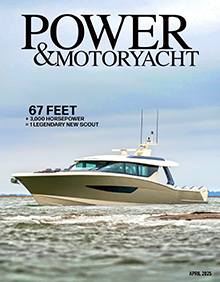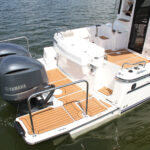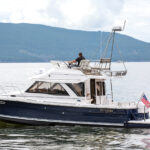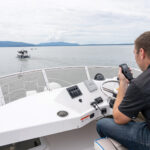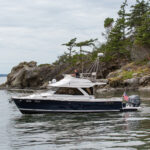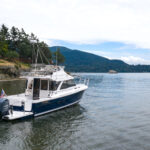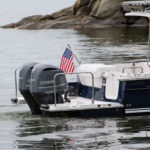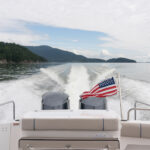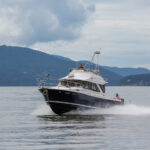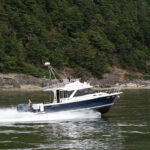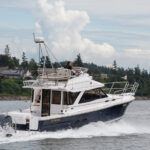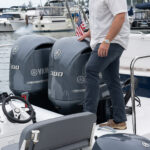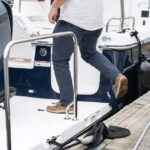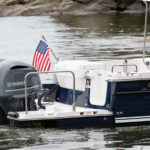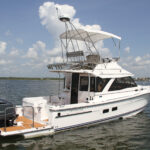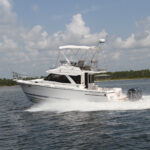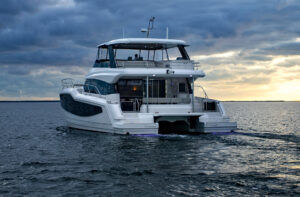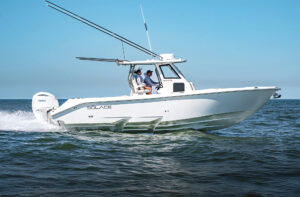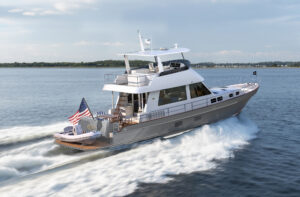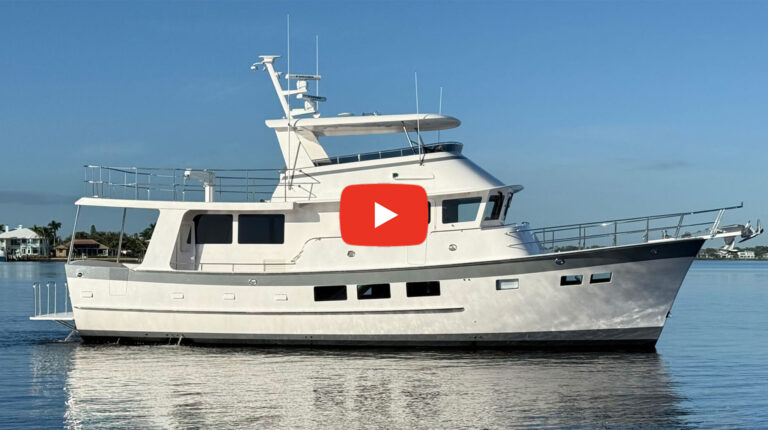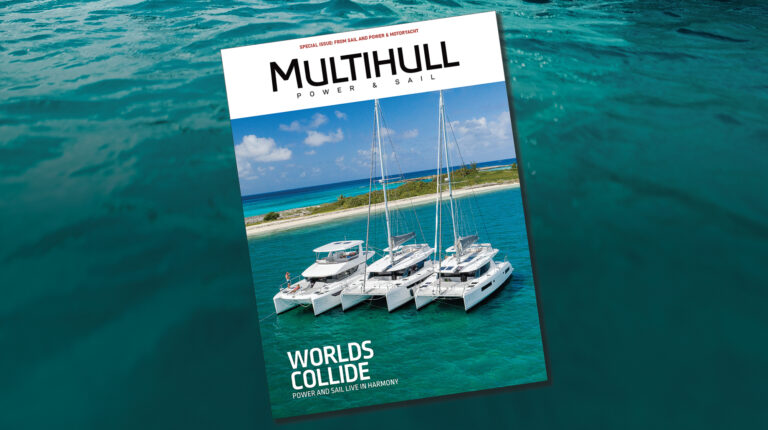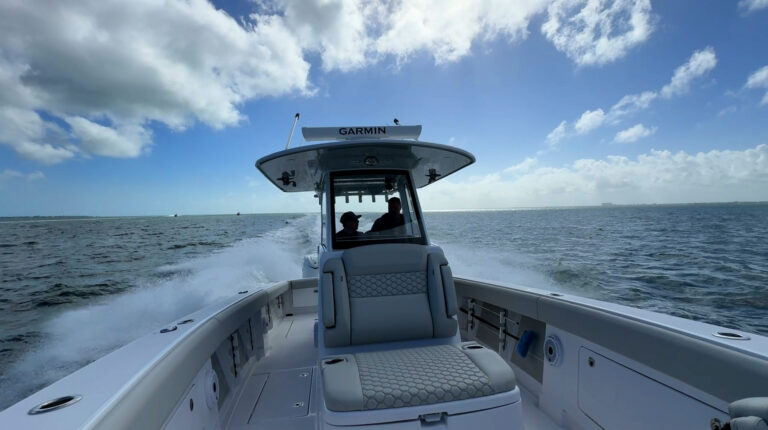
Cutwater C-32 Command Bridge
The wilds of the Pacific Northwest are not to be taken lightly. Though beautiful, the rocky shores, verdant outcrops and deserted scenery—many only accessible by boat—come with their own unique challenges. Hard-to-spot deadheads float in the water. A long rainy season, coupled with chilly climes, necessitates an enclosed helm. And far-flung ports require a large fuel capacity.
For that reason, from the San Juan Islands to Desolation Sound, you can find trawlers cruising all over the Pacific Northwest. But you also see the faster Cutwaters: cruisers with a little more pick-up, able to get places in a hurry. Built in Monroe, Washington, by Fluid Motion (the company also owns Ranger Tugs), Cutwaters are no-fuss, pared-down vessels packed with features. The brand shirks any air of yachtsman-like pretentiousness for a more utilitarian approach to design. I like to think of Cutwaters—and Ranger Tugs, for that matter—as the Jeep Wranglers of boating. They’re rugged, dependable, versatile and built for exploring the great outdoors. And they won’t necessarily break the bank, either.
If Cutwaters are akin to Jeeps, then the 32 Command Bridge is a Wrangler with the top down. Across the industry, few boats offer a flybridge with outboard-power. (I can see that changing soon.) “Adding a command bridge to one of our outboard-powered boats is something we’ve been excited to do since we began developing our Cutwater outboard lineup. Our Volvo Penta diesel inboard-powered C-30 CB has been an incredibly popular model for years,” John Livingston, president of Fluid Motion, told me. “The primary concept behind the C-32 CB was to keep the cruising performance and comfort of the C-30 CB and add the versatility and speed that outboard power and a planing hull provide.”
To that end, a double stepped deep-V hull—with the company’s patented Laminar Flow Interrupters—provides a more comfortable ride while underway. Power is supplied by twin 300-hp Yamahas, neither of which impede the generous 32-square-foot swim platform that provides families with good access to the water. Stainless-steel handrails provide an added element of safety when boarding.
While I can see the flybridge being the helm of choice for year-round boaters in warmer climes, in the Pacific Northwest, you don’t want to leave home without an enclosed helm station. The C-32 CB has both—each equipped with Garmin 8612 MFDs. As far as sleeping arrangements go, the C-32 CB boasts a master cabin forward with a slightly canted bed with easy access on both sides. Abaft the helm is a dinette that seats four; if necessary, the table can be lowered to create an additional sleeping space. The surprise is underneath that: a coffin berth—all of 6 feet, 8 inches long—complete with reading lights and a porthole. All told, the literature proposes the C-32 CB sleeps five or more. Though I had visions of a Griswold vacation playing in my head, you’re free to use the family cruiser however you wish.
There are too many features to count, though I will add the boat has a fully furnished galley and rear-facing lounge seat, an electric grill, a sink and an additional refrigerator in the cockpit. It’s also trailerable, with a bridge-friendly clearance of 13 feet, 6 inches. (The flybridge and radar arch are designed to fold—a reported easy, two-minute affair.)
The C-32 CB is a boat that was surely meant to go places: Fluid Motion has seen to that. “We have customers that have trailered their Cutwater to and from every corner of the continent to cruise and fish in places like the Sea of Cortez, Lake Powell and of course the Great Loop,” said Livingston. “The 10-foot beam allows the boat to be easily trailered behind your own truck, so no waterway is out of reach.”

Cutwater C-32 Specifications:
LOA: 39’10”
Beam: 10’
Draft: 2’9”
Displ.: 12,000 lbs.
Fuel: 300 gal.
Water: 80 gal.
Power: 2/300-hp Yamaha outboards
Cruise Speed: 30 knots
Top Speed: 47.7 knots
Base Price: $329,937

